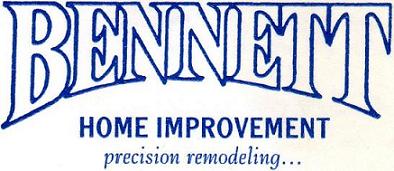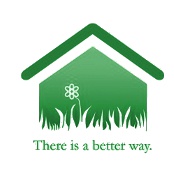|
Energy Efficient
Home Remodeling
For our customers who are looking to upgrade the appearance and the
efficiency of their building or
home Free Energy has the solution. We believe that a company is only as
strong as its foundation.
That’s why at Free Energy we partner with professional and qualified
building contractors such as

The Bennett home professionals have over 30 years of combined
construction experience. Their projects cover everything from million dollar custom homes, neighborhood and
urban development to large scale commercial remodeling. Free Energy and
the Bennett professionals work together on all of these types of
projects to ensure that each venture is of the upmost style, comfort and
highest efficiency.
Bennett Home Improvement is committed to
Green Remodeling practices. What
makes Bennett a Green Building/Remodeling Pro? They work constantly to
marriage high quality, style and sustainable building
practices in each of their projects. Bennett professionals consult each
customer to understand the vision and
style that is expected. Next they implement the expected vision and
customers input with green building practices that will help the customer save money, help the environment
and still keep the vision the customer had in mind.
Bennett Home Improvement building professionals maximize Nature’s
resources in efficient and responsible manners. They conduct these
principles in both their business and in their remodeling projects
alike.
http://www.webennettinc.com
Basic Green Remodeling
practices:
Despite more awareness about green building, there is still a lot of
confusion about exactly what green
building is. For most experts, there are
five main characteristics that define it: characteristics that define it:
-
Having an
environmentally friendly site selection or "footprint." Some of
the factors involved are orientation of the house to maximize
natural sunlight for heat and light, as well as shade for cooling.
As a result, the home's furnace and air conditioning don't have to
work as hard to maintain a comfortable house. Another goal is making
a minimal impact on the area in which the house is built. Forget
clear-cutting the entire lot; take down only the trees and bushes
that would interfere with construction. The remaining trees can help
cool the house in the summer and act as a windbreak in the winter.
And locating the home near shopping and other services will keep the
amount of driving down — a win for the entire environment.
- Using energy
efficient designs and materials while building a "tighter" home to
prevent HVAC loss. The use of sunlight and shade for heating and
cooling is as old as mankind, but there are designs and materials
specifically designed to keep the house nearly air-tight. With less
outside air infiltrating the home, the indoor climate is much easier
to control. LED lights use a fraction of regular incandescent bulbs,
while Energy Star appliances are certified to meet strict guidelines
about how much electricity they require to operate.
Because higher insulation standards and
Energy-Star-compliant appliances have evolved over the last few decades,
energy efficiency is often the first place builders start when going
green
- Reducing a
home's water consumption through low-flow fixtures. It's true
that the earliest low-flow plumbing fixtures caused problems for
some homeowners, but today's versions are as good — if not better —
than the old water hogs. One technology is the incorporation of air
into the process; the result is a low-flow shower that feels just as
strong as the one using much more water.
- Promoting a
healthy indoor air environment. Yes, air-tight houses are
critical to energy efficiency, but an unwelcome result is indoor air
quality that is five times more polluted than the air outdoors.
Green builders often use some kind of fresh-air ventilation to
exhaust the stale indoor air to the outside, bring in fresh air
and conserve energy.
- Emphasizing
material conservation and waste reduction while using sustainable
products in design and construction. Engineers in the
building-materials business have designed all kinds of products to
save lumber by using optimal value engineered (OVE) joists and beams
that require minimal trimming and boring for mechanical runs. Green
builders can go as far as recycling job-site waste and using it for
mulch in the newly planted yard.
|






